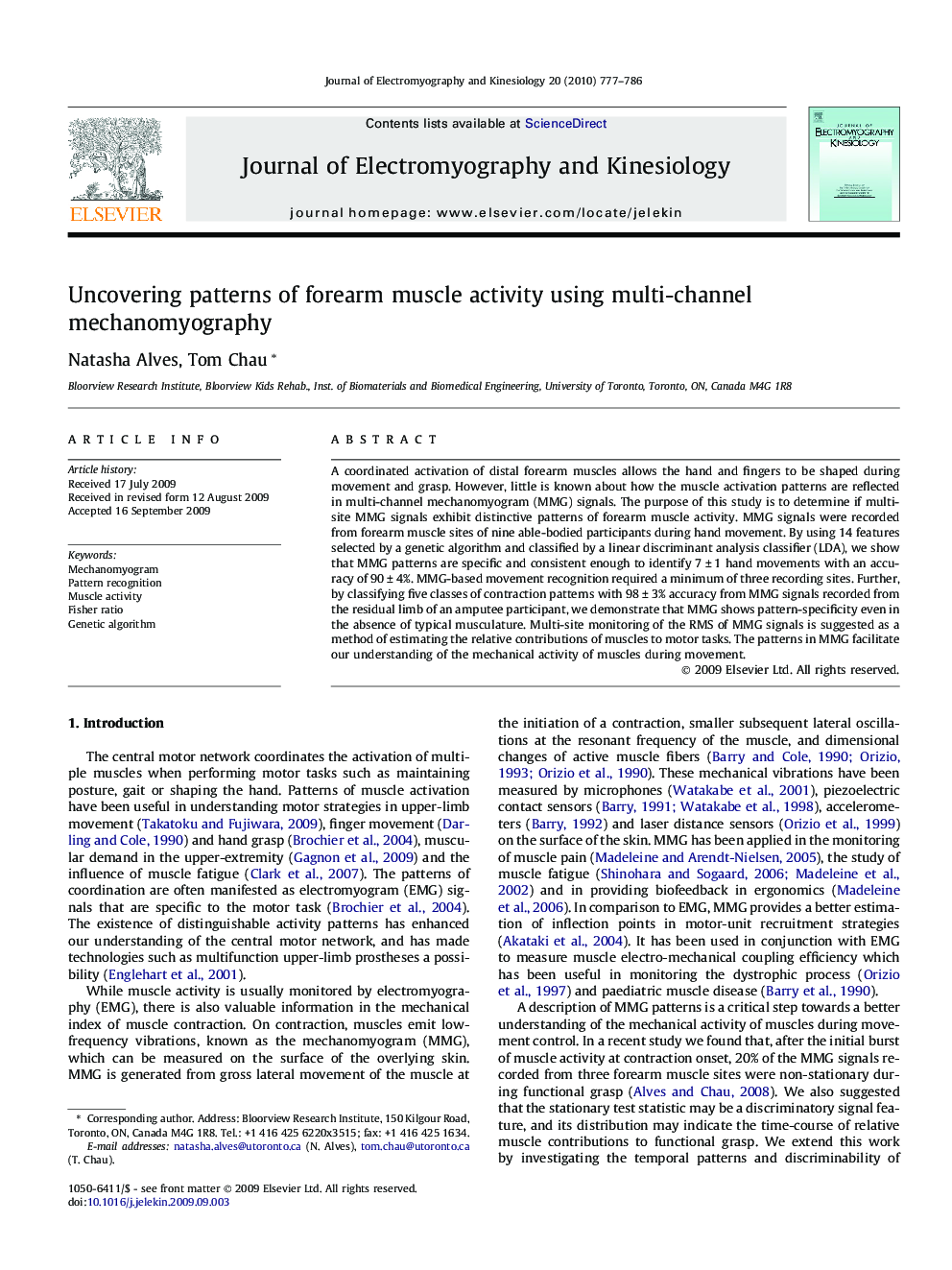| Article ID | Journal | Published Year | Pages | File Type |
|---|---|---|---|---|
| 4065118 | Journal of Electromyography and Kinesiology | 2010 | 10 Pages |
A coordinated activation of distal forearm muscles allows the hand and fingers to be shaped during movement and grasp. However, little is known about how the muscle activation patterns are reflected in multi-channel mechanomyogram (MMG) signals. The purpose of this study is to determine if multi-site MMG signals exhibit distinctive patterns of forearm muscle activity. MMG signals were recorded from forearm muscle sites of nine able-bodied participants during hand movement. By using 14 features selected by a genetic algorithm and classified by a linear discriminant analysis classifier (LDA), we show that MMG patterns are specific and consistent enough to identify 7 ± 1 hand movements with an accuracy of 90 ± 4%. MMG-based movement recognition required a minimum of three recording sites. Further, by classifying five classes of contraction patterns with 98 ± 3% accuracy from MMG signals recorded from the residual limb of an amputee participant, we demonstrate that MMG shows pattern-specificity even in the absence of typical musculature. Multi-site monitoring of the RMS of MMG signals is suggested as a method of estimating the relative contributions of muscles to motor tasks. The patterns in MMG facilitate our understanding of the mechanical activity of muscles during movement.
